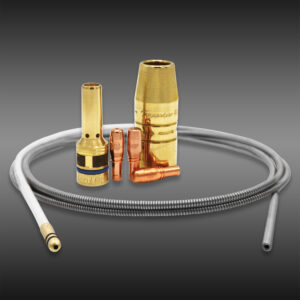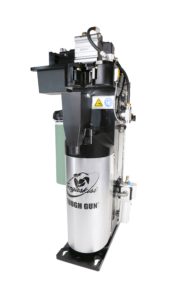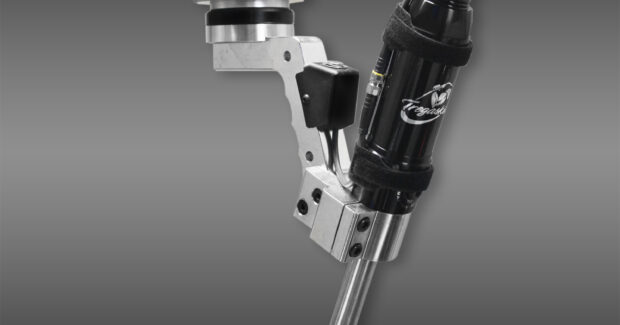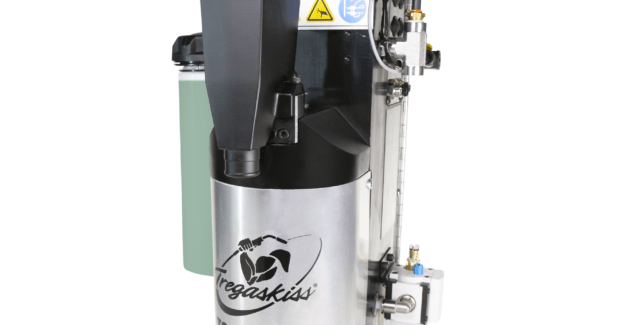Ways to Save More Money With a Robotic Welding System
Robotic welding systems deliver fine-tuned programming to ensure the accuracy, speed and repeatability needed for high-quality welds.
Posted: February 20, 2024

In a world where technology continues to play an increasingly bigger role, it’s no surprise more and more welding operations are investing in robotic welding systems to gain a competitive edge. Such systems not only deliver fine-tuned programming to ensure the accuracy, speed and repeatability needed for generating high-quality welds, they also further productivity and efficiency for an operation. A lot of planning goes into the implementation of these systems, and robotic integrators or vendors also offer great training that’s critical to operators from the start and across the span of that system’s use. Because of this, robotic welding systems have become an investment that involves less risk and a lot more upside. Apart from the productivity gains and quality improvements, saving money is a key reason companies are choosing to implement them. Beyond the benefits of the robotic welding system itself, there are numerous ways companies can increase cost savings and ROI. Here are seven.
- Invest in Peripherals
Some operations view peripherals like reamers, wire cutters, neck inspection toolsand clutches or solid mounts as unnecessary costs. That’s usually because the role these products play in maintaining the quality, productivity and effectiveness of a robotic welding system is not fully understood.
While it’s true that peripherals require an up-front investment, they are particularly critical for minimizing the type of downtime that leads to offline maintenance and repairs relating to components and equipment like the robotic MIG gun, cables or consumables. But the good news is that the ROI on an investment in peripherals happens quickly and on several fronts. For example, a reamer, which is also commonly referred to as a nozzle cleaning station or spatter cleaner, helps minimize spatter buildup in the nozzle and ensure good shielding gas flow, all in the name of avoiding costly repairs or rework. A reamer also reduces the risk of electrical resistance, which can cause a robotic MIG gun or consumables to fail prematurely. This is important to note because gun or consumable failure leads to replacement costs and downtime for changeover, which takes a robot offline and prevents it from making parts (and making money).
- Manage and Maintain Consumables

As with many things in life, proper storage and handling of equipment factors into its effectiveness. Consumables are no exception. Costly damage can happen even before placing consumables on the robotic MIG gun. To protect them, always store consumables in their original packaging until they are ready for use. Opening the packaging or placing these components in bins may result in scratches and dents, which can make it possible for spatter to adhere to the product and lead to premature failure. Similarly, removing contact tips or retaining heads from their packaging and storing them in open containers can cause dirt and/or oil to accumulate on them, which can cause issues like improper seating.
As for consumable installation, it may seem obvious to say that it’s best to adhere to MIG consumable manufacturer suggestions. But best practices are often overlooked, and there’s a cost to that. Using the proper process and tools for installation is an easy way to reduce the risk of damaging consumables and to optimize their performance within the robotic welding system.
Once consumables are installed on the robotic MIG gun, take a moment to check that all connections for the contact tips, retaining heads and nozzles are secure. Solid connections are what create reliable electrical conductivity and minimize heat, both essential for creating quality welds and extending consumable life. This simple practice can go a long way toward minimizing product replacements and preventing downtime that keeps the robot from reaching its optimal throughput during a shift. Replacements and downtime both have measurable expenses associated with them, so securing connections is a clear way to secure savings.
- Establish a Preventive Maintenance Program
A preventive maintenance (PM) program is another best practice for robotic welding systems when it comes to ROI and a company’s bottom line. By planning for downtime and building it into schedules, it’s possible to identify issues before they arise and get ahead of repairs and equipment replacement before it becomes critical.
In addition to securing connections before a robot goes into production, checking them regularly — from the front-end consumables through the gun and power pin — is a PM imperative. PM efforts can also make it easier to tackle the following: addressing or preventing debris buildup that adversely affects part fit-up; cleaning fixturing and inspecting front-end consumables for spatter buildup or replacement needs; and checking tool center point (TCP) verification, a cost-saver that keeps a robotic welding system operating within its proper parameters to provide consistent — and repeatable — weld quality.
Some PM measures, like cleaning off the robot, tightening connections or changing consumables, can be tackled between shifts, while others — like greasing the robot’s joints — are less frequent and do require additional time. Every operation should build out a PM program that aligns with their robotic welding system’s production volume, schedules and staffing. Larger companies may also find that hiring a maintenance crew to take care of preventive maintenance is the best approach for them.
- Invest in the Best Filler Metal Package
Reducing downtime for routine filler metal package changeovers can be one of the most effective ways of maximizing ROI and productivity. There are several factors to consider, including the filler metal package size and the filler metal type.
It’s best to select a filler metal package large enough to minimize wire changeovers, but not so large that the same wire will remain on the shop floor for more than a couple of days. Filler metal manufacturers typically ship their products in airtight or hermetically sealed containers. Once opened, the wire is at risk of absorbing moisture, dust, oil or other contaminants that can diminish its welding performance and ultimately cost money to replace, not to mention downtime to change over.
When it comes to filler metal type, there are several factors to consider. For instance, recyclable filler metal packaging can reduce costs and labor for properly separating and disposing of recyclable and non-recyclable packaging materials. Also, stocking an extra filler metal package near the robot can contribute to cost savings by reducing downtime to transport a new package from the storage area to the weld cell.
- Select, Trim and Install the Proper MIG Gun Liner
MIG gun liner selection and installation play leading roles in preventing problems like poor wire feeding or bird-nesting (a tangle of wire in the drive rolls), which can lead to downtime and added costs.
A first step to avoiding these issues is to match the correct diameter liner to the wire. Pairing too large of a liner for too small of a wire may allow the wire to meander, causing poor wire feeding and/or premature liner failure due to excessive wear. Similarly, if a liner is too small for the wire diameter, the wire won’t be able to feed smoothly, resulting in poor weld quality and potentially a clogged liner.
Taking care to trim the liner to the correct length is also a cost-saving measure that helps prevent downtime and costs for part replacements. Some manufacturers print markings on the outside of the weld cable to show when the cable is twisted, which gives welding operators the chance to straighten the cable fully and measure for correct liner length. Others offer liner gauges as a guide. Both options work well to guide proper trimming.
6. Select the Right MIG Gun for the Job
Matching the style and amperage of a MIG gun to the application helps avert downtime associated with overheating and equipment failure. It can also save money by preventing the purchase of a larger and more costly gun than is needed to do the job.
Air-cooled robotic MIG guns are good for welding thinner materials, typically upwards of 4 mm thick, and work well for shorter welds on high-volume applications. Ownership costs for these guns are usually relatively low because they are easier to maintain, and their replacement parts are less expensive than water-cooled guns. Plus, robotic air-cooled guns are quite durable, especially through the neck, which further reduces costs because the guns maintain their accuracy and create consistent quality welds.
For higher-amperage applications, applications with thicker materials (1/4-inch or more) or those running prolonged duty cycles, it’s necessary to have a gun that can withstand the increased heat. A water-cooled MIG gun offering 300-to-600 amps of power and 60%-to-100% duty cycle is a smart option to help reduce costs, as it prevents overheating that may cause gun failure and downtime. These guns cost more to maintain, so it’s a good idea to implement a PM program to help prevent unexpected expenses.
Hybrid robotic MIG guns are another option to reduce costs while also boosting amperage by providing water-cooled benefits to an air-cooled MIG gun. These guns typically feature external water-cooling components that keep front-end consumables running cooler and lasting longer and water lines that run independent of the power cable — making them easier to access than on a standard water-cooled MIG gun. Plus, if water cooling capability is lost, the air-cooled functionality of these hybrid MIG guns remains fully operational.
- Take Advantage of Training Opportunities
Because robotic welding systems require human oversight, many robotic integrators offer training at implementation and beyond it. Programs like online tutorials, troubleshooting information and/or additional onsite training as aftercare support tend to prove invaluable in helping the operators of robotic welding systems hone their skills and expand their knowledge around programming, problem-solving and best practices for PM. Investing time in these learning opportunities also makes it easier to maximize the productivity, efficiency and ROI of the robotic welding system — ultimately ensuring the upside this system can have on your bottom line.


















